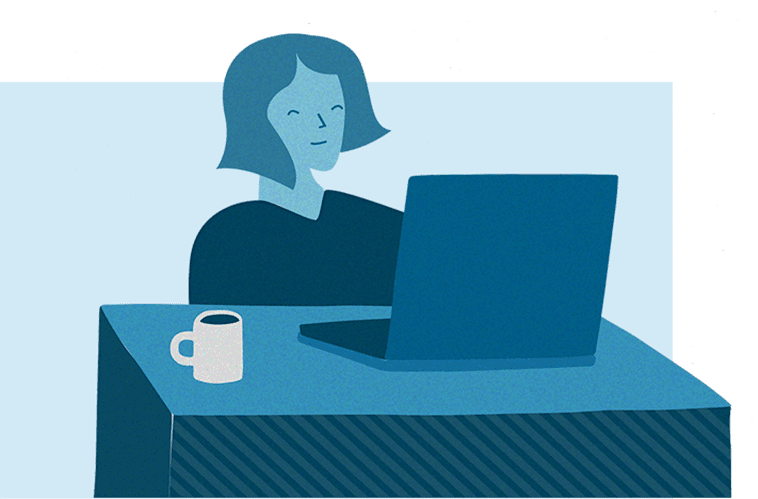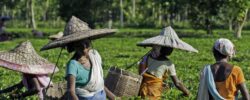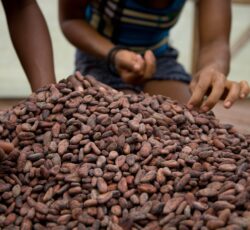Do you have questions? We are here to answer!
If by chance your question remains unanswered, do not hesitate to contact us.
Contact usWhat is traceability? And what does Fairfood want to achieve with it?
If we go by the book, traceability means that one has the ability to verify the history of something – think of: the provenance of a product. As consumers we (naturally) buy products from opaque supply chains – it is simply how the food system is largely operating at the moment. However, every product has their own individual story; we intend to tell that story. These stories extend far beyond the product that we consume. It goes all the way back to the players at the beginning of our food supply chains: the farmers and food workers.
If we can trace back the history of a product, we could identify some deep-rooted issues that the people at the beginning of the chain are facing. Issues like poverty and unfair pricing are real problems that need to be addressed. In bigger letters, we want to use traceability as a starting point to make sure that the people behind our food can earn a living income.
What is transparency? And what does Fairfood want to achieve with it?
With transparency, we deduce a food supply chain that ceases to be opaque; one in which everyone can see where their food is coming from, by who it was harvested, and whether that someone got a fair price for their produce. Then, we proceed to the following question: do those people earn enough money to make a living income or wage?
We want to use the transparency that blockchain enables to help consumers answer that question and pick their food consciously. Is your food brand claiming to be paying a fair price to their farmers? Why not check for yourself. This is what we want to achieve: a food system in which consumers can verify veracity for themselves so that it can benefit those who cannot.
Does Fairfood still organise campaigns?
Fairfood has undergone some changes: we realised that one way to make a direct change in our food system is by helping businesses to implement traceability and transparency in their supply chains. We want to drive sustainable change from the inside. The mission remains the same, however: to use our technology to the benefit of those who are at an obvious disadvantage in a long and complex supply chain. This means that campaigning is no longer our core business. Nonetheless, when needed we will not be afraid to take a stand!
What SDG’s is Fairfood working on?
Following the Millennium Development Goals of the United Nations, there are now the Sustainable Development Goals (SDGs). These 17 Sustainable Development Goals must have put an end to poverty, inequality and climate change by 2030. Fairfood is involved in the achievement of six of the 17 goals: 1. No Poverty, 2. Zero Hunger, 5. Gender Equality, 8. Decent Work and Economic Growth, 10. Reduced Inequalities, 12. Responsible Consumption and Production.
Do you have any job openings?
At Fairfood we always welcome like-minded people who are keen on making a change in our food system! If there is no job opening, you can always send us an open application.
Our organisation’s doors are also always open for interns and volunteers. Are you thinking communication- and project management? Or research? If so, we could use an extra pair of hands. If you think you will fit right in as an intern or volunteer, send us an open application. Who knows? You might become part of our team. Off to 100% transparency and traceability we go!
Who can use ALIGN?
We can be brief about that one: everyone who works for a company in the agri-food sector.
What is ALIGN and what does it do?
We think of ALIGN as an interactive database in which we collect all relevant research, tools and partners that help companies realise living wages and incomes. With the work in our Living Wage Lab, a collaboration with Hivos, we kept getting signals that the subject is a complex one, and that companies often don’t know where to start once they have set themselves that wonderful ambition. ALIGN breaks the road to living wages and incomes down to a step-by-step plan and offers guidelines for every step.
Who are the partners behind ALIGN?
ALIGN is a product stemming from the Living Wage Lab, a collaboration between Fairfood and Hivos. We asked True Price to conduct an assessment of the greatest needs that companies have on their way to realising living wages and incomes. Subsequently, Hivos and Fairfood developed the tool together with Rainforest Alliance. Schuttelaar & Partners played an important role in the development of ALIGN. The implementation was done by GIZ, with financial support from the German Ministry of Cooperation and Development.
What is a living income? And what about a living wage?
Simply put: earning a living income means that someone earns enough to lead a decent life. With more diction: a living income is the compensation that a self-employed individual receives for a standard working week that enables that farmer and all his/her family to afford a decent living. This means, among other things, that the household can afford basic necessities like: sufficient food and water, a roof over their heads, education, health care, transport and education. After basic necessities, the farmer should also have enough money to save, and build a pension.
It is important though, to make a distinction between “living wages” and “living income”: a living wage applies to people with wages, whereas a living income applies to self-employed workers, such as the farmers behind our coffee. Learn more on this page.
Who owns the data on the Trace platform?
The data uploaded on the Trace platform will always remain in the user’s hands and will never be used or resold by Fairfood or other parties without explicit permission.
How is the accuracy of collected data verified on Trace?
Data is verified in multiple layers. First, with a technical check, incorrect entries (e.g.: numbers in name) and impossible data (e.g. 200 inputs in one second) are filtered out. Then, depending on the claim settings, data is either self-verified, system verified, or third party verified. Third party and system verified claims often shows more accuracy than self-verified claims.
How does Trace relate to certifications?
Certification labels have done a great job and raised a lot of awareness among consumers when it comes to social and environmental sustainability. Nevertheless, with current practices quality marks are reaching their limits. They will be the first to admit this. One problem with certification is that they only offer one standard, while every product and product chain is unique. To summarise this complex ecosystem of people, activities and processes in one binary certificate – fair, organic – is not enough. The next step lies in transparency and traceability – in connected chains and chain partners who can take their responsibility. Various certifiers, too, are looking into this. Trace is the next step. In the future, certification labels could potentially serve as a partner on the Trace platform. Fair trade or organic certifiers could act as the verifier of claims that are made within the Trace platform, be it with more transparency than current certification offers.
Does Trace give total transparency on prices on all levels, from farmer to end user?
Trace gives transparency on data that is collected and shared by supply chain partners. If all supply chain partners choose to share price data, then Trace can give that transparency, yes. This is not always the case nor is it always desirable, though.
What are the major challenges that the current users of Trace have faced?
The major challenge that users face is the difficulty in data collection. We make this process simple by integrating with existing data systems (so that data is automatically processed), and through bulk uploads of data via simple excel sheets. Once the technical challenges have been minimised, it is a matter of training users on how to work with the system. After an initial startup period, working with Trace is usually no more than periodically uploading an Excel sheet.
Do the farmers require internet access for using the Trace platform?
No, farmers do not necessarily require an internet connection or a smartphone to access the platform. They can interact with the system via basic mobile phone using SMS service. Producers can also designate a proxy (co-operatives, CSO’s etc.) to make use of the platform on their behalf.
What is a blockchain?
A blockchain is a distributed ledger that allows information to be captured and shared by a community. In this community, each member maintains their own copy of the information and all members must collectively validate each update. This provides a network with a single source of truth to work with. Very similar to a Google sheet, but better. Why? Because with blockchain, data can only be added according to a certain set of rules controlled by the network, and once added, the data can never be altered or deleted.
What is the added value of blockchain?
The ingredients of our food travel thousands of miles until they end up on our plate. The chains are long and complicated and therefore not always equally insightful. Blockchain technology can provide transparency and ensure that captured data can be more customized and remains in the hands of the user. This makes blockchain a fair platform where data can be exchanged, even within competitive value chains. It creates an open food supply chain, from farmer to consumer. Both farmers and consumers will have access to important information.
The farmer will have a view on further processing of his/her product, such as the quality label which is awarded at a later stage. In addition, the nutmeg farmer confirms, for example, that he has received a certain price for a certain quantity and type of quality. The consumer can see exactly where the product comes from, but also whether sustainability and quality promises are being fulfilled. The advantage is that sustainability and quality requirements on the blockchain can be guaranteed.
Are consumers willing to pay more for products that are traceable?
Yes, we often see an increase in the price of traceable products by 1-12% and customers are happy to pay for it! Research shows that some 75% of consumers express demand for more product data. A similar percentage of consumers also distrusts the claims companies make about their products. We see in this a clear confirmation that creating a decentralised layer of trust with systems such as ours is a good way forward.
How much time will implementing the tool cost?
Over the past two years, we have been mapping the entire process of tracing products, signing up chain partners and offering transparency through blockchain. Our goal was to make the Trace process as easy as possible so that we can now make it available to everyone at an affordable price, including companies that don’t yet know where their products come from. At the same time, this is a platform created to bring a systematic change within food chains. Change creates friction. So, the correct implementation of a sound solution will always take attention and energy. To this question, we don’t have one simple answer, but do get in touch so we can make an estimation for your company.
How does Fairfood share the story of traceable products with consumers?
A fundamental challenge in food is to link digital product stories to physical products. Tagging, in all its forms, is a way to do this and QR’s and barcodes are the most widely used methods for this. Trace automatically generates a QR tag that can be attached to the physical product to provide access to the digital product story.


